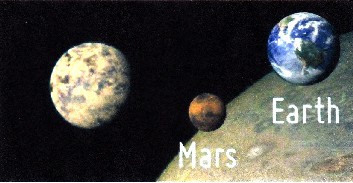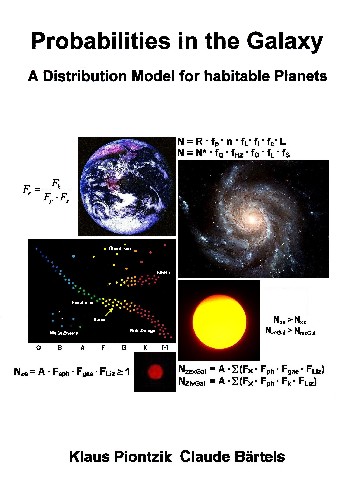 |
Approximately earth-great planets
are planets about the size of the earth with at
least one earth mass. Almost all planets of
approximately the size of the earth found so far
lie in a range of 1.3 to 4.8 earth masses. Most
of these planets are slightly larger than Earth,
or at most twice as large. |
According
to the "Habitable Exoplanets Catalog" of
September 2015, 10 of 31 habitable planets are about the
size of the earth. This corresponds to a share of 32.258
%. The probability factor is Fg
= 0.322,58 = 10:31.
According to the "Habitable Exoplanets Catalog"
of December 2017, 22 out of 53 habitable planets are
about the size of the earth. This corresponds to a share
of 41.509 %. The probability factor is Fg
= 0.415,094 = 22:53.
iIf you calculate the mean value from both information,
you get:
| |
Fgm = 0.368,837 ±
0.046
Fgm =
1,212:3,286 |
| |
|
| 2.4.1 Theorem |
36.883% of all habitable
planets, in sun-like star systems, are probably
approximately earth-great. |
Then, from equation 1.6.1 for solar-like star systems
that have habitable planets, a relationship can also be
extrapolated for approximately earth-greatplanets.
Related to all star systems A in our
galaxy, the number Nhg of solar-like star systems,
with habitable, approximately earth-great planets,
results to:
| 2.4.2 Equation |
Nhg
= Nh ·
Fg
Nhg=
A · Fsph ·
Fg
Nhg=
A · Fs ·
Fp ·
Fh
· Fg |
|
Starting point are 100-300 billion solar systems in the
galaxy. Insert into equation 2.4.2:
| 2.4.3 Theorem |
There could be 2.458 to
7.376 million, approximately earth-great,
habitable planets in solar-like star systems, in
the galaxy. |
The probability for habitable planets, about the size of
the earth, in solar-like star systems, in the galaxy, is
then:
| 2.4.4 Definition |
Fhg
= Fsph
· Fg |
Fhg = Fsph·Fg
Fhg= 1:15,000 · 1,212:3,286
Fhg= 0.000,024,589 = 1:40,668
Among about 40,668 sun-like star systems
there is one, with at least one habitable, approximately
earth-great planet.
|
